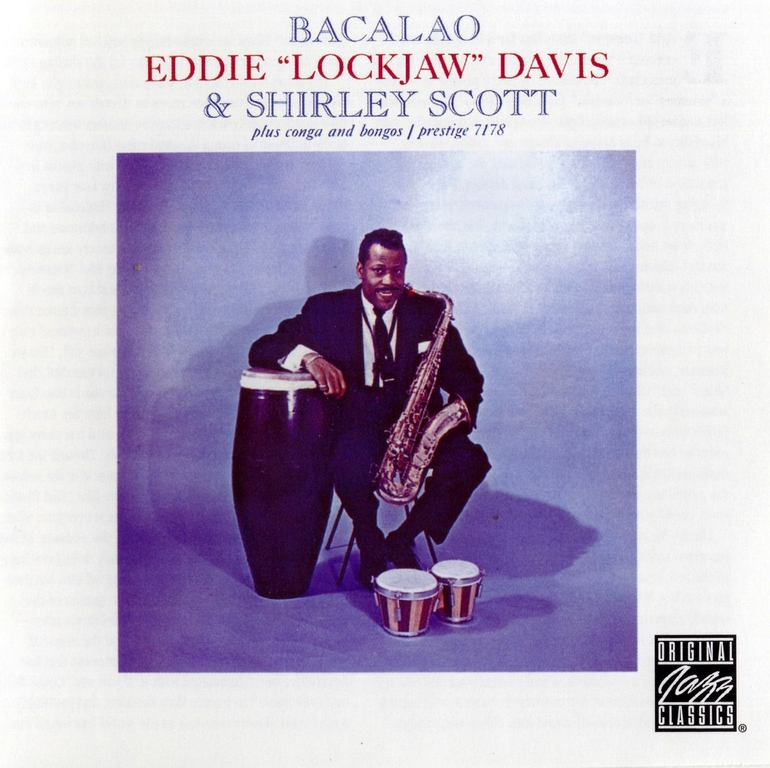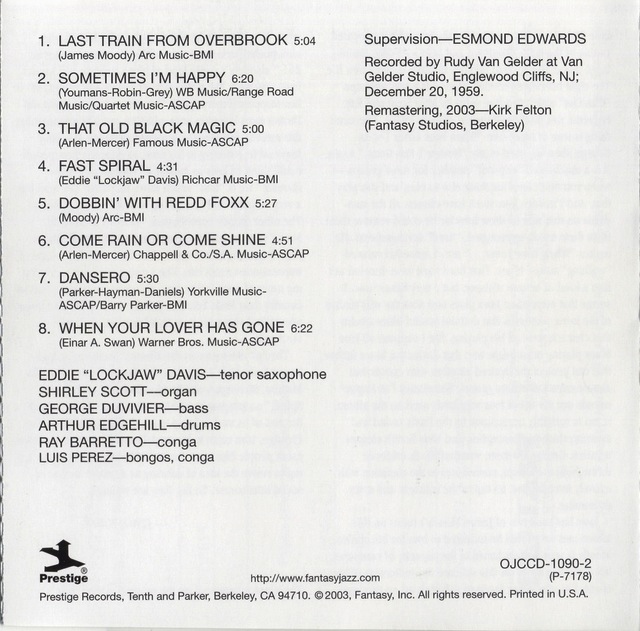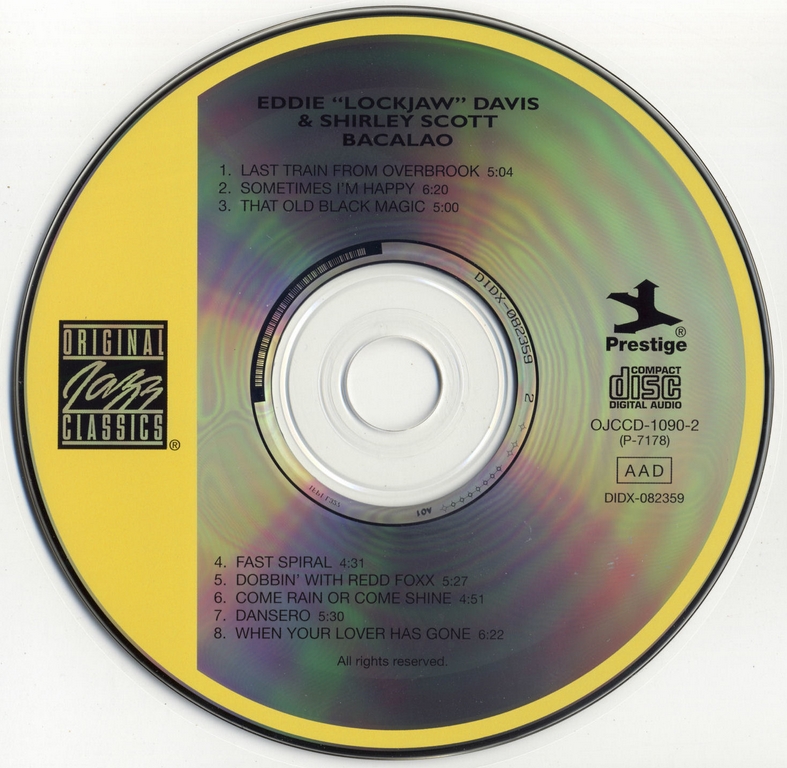


BOOKLET
Eddie “Lockjaw” Davis; Shirley Scott – Bacalao
Prestige: OJCCD-1090-2 (PR 7178) {1959}
Original Jazz Classics
01 Last Train From Overbrook 05:07
02 Sometimes I’m Happy 06:23
03 That Old Black Magic 05:02
04 Fast Spiral 04:35
05 Dobbin’ With Redd Foxx 05:29
06 Come Rain Or Come Shine 04:54
07 Dansero 05:33
08 When Your Lover Has Gone 06:24
8 tracks, 43:27
Musicians
Saxophone Eddie “Lockjaw” Davis
Organ Shirley Scott
Bass George Duvivier
Drums Arthur Edghill
Congas Ray Barretto
Bongos, Congas Luis Perez
Credits
Producer Esmond Edwards
Engineer Rudy Van Gelder
Liner Notes Leroi Jones
Details
Studio / Venue Van Gelder Studio
Place Englewood Cliffs, N.J.
Recording Date 12/20/1959
Date Of This Release 2003
Sound Stereo
UPC/EAC 025218709026
Spars AAD
Review/Notes
AMG review by Alex Henderson
When it came to tenor saxophonists, the late organist Shirley Scott had excellent taste. One of the big-toned tenor men she worked with extensively was Stanley Turrentine, whom she married; another was Eddie “Lockjaw” Davis. Recorded in Rudy Van Gelder’s New Jersey studio in 1959, Bacalao is among the many solid hard bop/soul-jazz albums that resulted from Davis’ association with Scott. The two of them enjoyed an incredibly strong rapport in the late ’50s and early ’60s, and they are very much in sync on Bacalao (which unites them with bassist George Duvivier, drummer Arthur Edgehill, and two Latin percussion men: Luis Perez and salsa giant Ray Barretto). The presence of Perez and Barretto gives the album some Afro-Cuban appeal, and both of them do well by Davis and Scott — who are in fine form whether they turn their attention to two James Moody items (“Last Train From Overbrook” and “Dobbin’ With Redd Foxx”) or well-known pop standards (which include “That Old Black Magic,” “Sometimes I’m Happy,” “When Your Lover Has Gone,” and “Come Rain or Come Shine”). In the liner notes that he wrote for Bacalao in 1959 or 1960, Amiri Baraka (formerly Leroi Jones) describes “Come Rain or Come Shine” and “That Old Black Magic” as “old beat-up tunes”; even back then, those Harold Arlen standards were considered warhorses. But Baraka also goes on to say that Davis and his colleagues revitalize the songs. Organ combo soul-jazz was still new and fresh in 1959, and Scott was helping Davis find new ways to interpret very familiar melodies. Although not quite essential, Bacalao is a rewarding example of Davis’ ability to thrive in an organ/tenor setting.
—————-
Penguin, 7th ed.
*** Bacalao is a new arrival: a little bit of Latin bustle is added courtesy of Barretto and Perez, but mostly it’s good business as usual with Jaws and Shirley.
